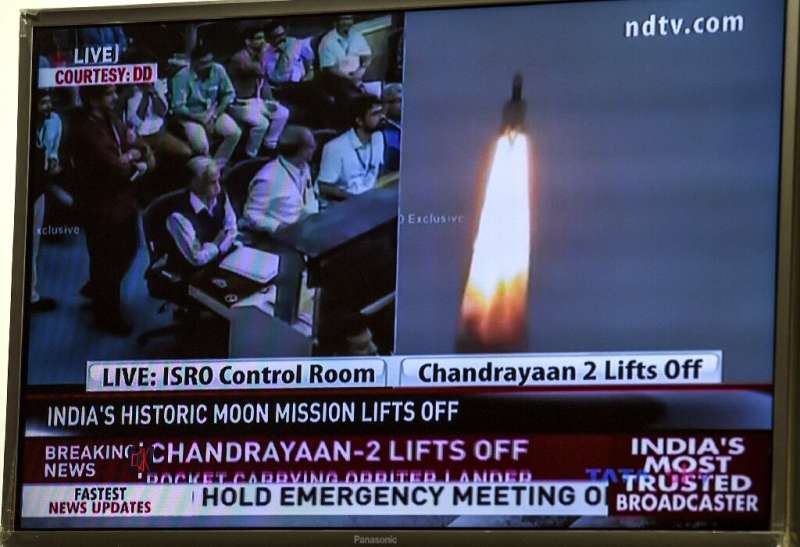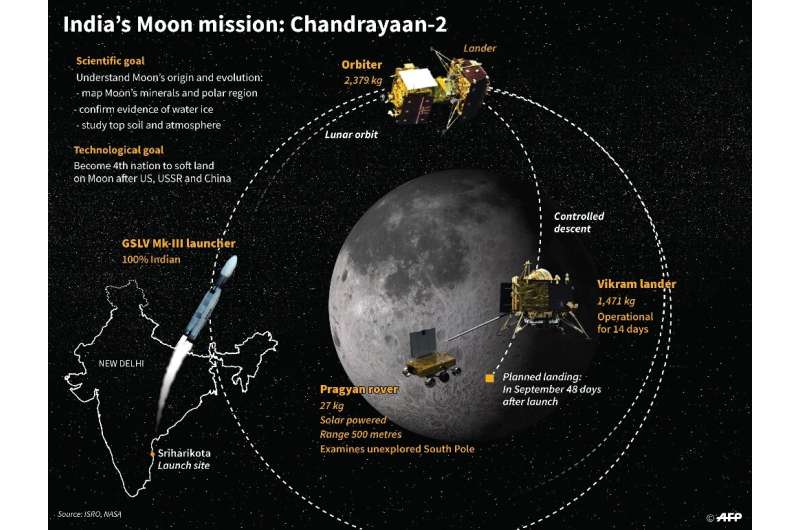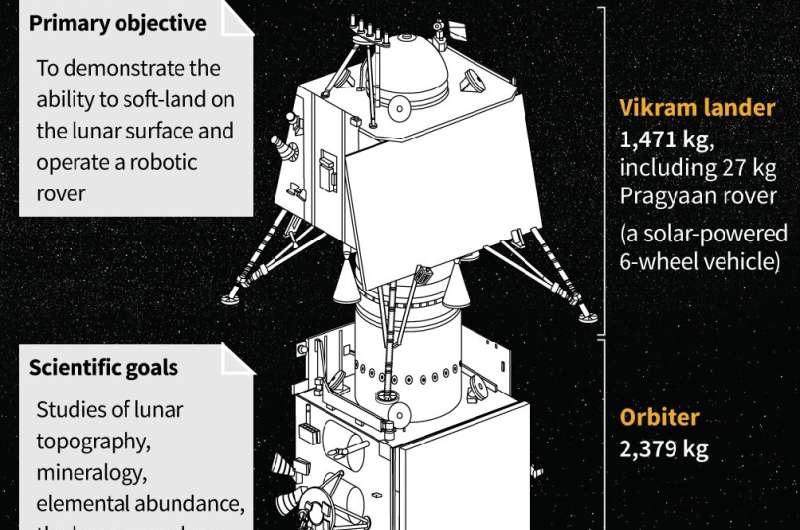Proud India launches historic bid to put spacecraft on Moon

India on Monday launched a low-cost rocket on a historic bid to put a landing craft on the surface of the Moon and join an elite space force.
A week after an initial launch was halted just before blast-off, Chandrayaan-2—or Moon Chariot 2—took off from the Satish Dhawan Space Centre carrying national pride and the hopes of Indian scientists.
India is seeking to become just the fourth nation after Russia, the United States and China to land a spacecraft on the Moon. If the rest of the mission goes to plan, the Indian probe will land on the lunar South Pole in early September.
"Every Indian is immensely proud today!," tweeted Prime Minister Narendra Modi, who has vowed to send a manned mission into orbit by 2022.
"Special moments that will be etched in the annals of our glorious history!"
There were applause, handshakes and hugs in the mission control room as the rocket blasted off from the base on an island just off the coast of Andra Pradesh state.
President Ram Nath Kovind watched the launch alongside 7,000 dignitaries and flag-waving children, with the crowd bursting into cheers at the spectacle.
"Today is a historic day for space, science and tech in India," Indian Space Research Organisation (ISRO) chief K. Sivan said as he hailed the efforts made to fix a fuel leak that forced the earlier launch to be postponed.

India was also hailed by its international counterparts. The US state department said on Twitter that the launch was "an incredible achievement!" while the European Space Agency sent congratulations.
Shooting for the Moon
Chandrayaan-2 was launched on India's most powerful rocket, the Geosynchronous Satellite Launch Vehicle (GSLV) MkIII. It carried an orbiter, a lander and a rover almost entirely designed and made in India.
The country's love affair with the film industry saw the media dub the rocket "Baahubali" after one of India's most popular screen heroes, known for his ability to lift heavy items.
Sivan said the mission's next stage would be critical to its success, with scientists set to conduct some 15 crucial manoeuvres of Chandrayaan-2 over the next month-and-a-half to position it around the moon.
"After that, D-day will come—and that day we are going to experience 15 minutes of terror to ensure that the landing is safe," he said.
The lander—named after Vikram A. Sarabhai, the father of India's space programme—will carry the rover to near the lunar South Pole.

ISRO scientists will remotely control the rover named Pragyaan—"wisdom" in Sanskrit—as it carries out experiments. It will work for one lunar day, the equivalent of 14 Earth days, studying rocks and soil on the Moon's surface.
Small budget, giant result
The 2.4-tonne (5,300-pound) orbiter is expected to circle the Moon for about a year, taking images of the surface, looking for signs of water, and studying the atmosphere.
Chandrayaan-2 stands out because of its low cost, with some $140 million spent on preparations for the mission—a much smaller price tag compared with similar missions by other countries.
The United States—which is marking the 50th anniversary of Neil Armstrong becoming the first human on the Moon—spent the equivalent of more than $100 billion on its Apollo missions.
India also hopes to seek out lucrative commercial satellite and orbiting deals.
The new mission comes almost 11 years after the launch of India's first lunar mission—Chandrayaan-1—which orbited the Moon and searched for water.
© 2019 AFP





















